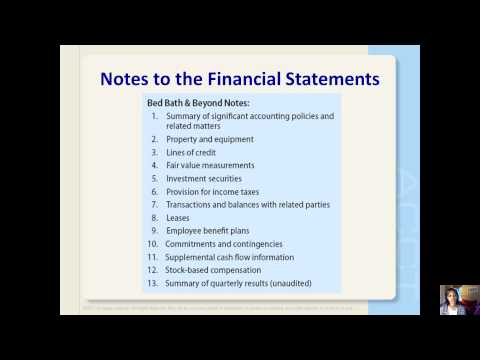What is the gravitational constant?

Presumably other physicists and science reporters around the world were, like me, hunched over screens waiting to see what the secret number would tell us about G. “However,” she adds, “this theory has been superseded by Einstein’s Theory of General Relativity, which is an improvement on ‘Newtonian Gravity,’ that posits that matter deforms space-time itself (like a heavy ball creating a dimple on a rubber sheet).” Explore gravity in more detail with a review of the laboratory tests on gravity conducted by the Eöt-Wash group at the University of Washington. Read a review of attempts to measure ‘Big G’ and what the results might mean. So Cavendish set about making the measurement, the most precise scientific measurement made up to that point in history. This quantity gives a convenient simplification of various gravity-related formulas.
They can take the place of the copper ones on the carousel to confirm that G is a true constant that doesn’t depend on the materials involved. At roughly twice the mass of the sapphire cylinders, the copper versions provide a better measure of G. Precisely how much each of the source masses weigh, though, Schlamminger doesn’t know. That’s because of the secret number tucked away in the sealed envelope.
Science X

Where Cavendish used a large wooden box to protect his apparatus from stray breezes, Schlamminger relies on a vacuum chamber to eliminate the air almost entirely. When Cavendish performed his first measurements of the force of gravity in a lab, he relied on a set of lead spheres. Two of them were hanging at either end of a rod 6 feet (about 2 meters) long, and the whole contraption was dangled from a wire. He then placed larger lead balls nearby and measured utilities expense the forces between the spheres by tracking how the hanging rod twisted on the wire. Although Cavendish was primarily interested in figuring out the Earth’s density, a little manipulation of his results shows that he effectively measured G for the first time.
Preparing an object for g-tolerance (not getting damaged when subjected to a high g-force) is called g-hardening.citation needed This may apply to, e.g., instruments in a projectile shot by a gun. But a much larger object such as the Moon (with a mass of 7.342×1022 kg) does have a noticeable effect on the Earth. That is the acceleration due to gravity “g” good sold on credit are recorded in that we all experience every day. This results in objects being attracted to each other, which we call Gravity.
- Experimentalists have used a variety of approaches – swinging pendulums, masses in freefall, balance beams, and torsion balances that measure the torque or rotation of wires supporting masses that are attracted to other masses.
- Preparing an object for g-tolerance (not getting damaged when subjected to a high g-force) is called g-hardening.citation needed This may apply to, e.g., instruments in a projectile shot by a gun.
- Considered in the frame of reference of the plane his body is now generating a force of 1,450 N (330 lbf) downwards into his seat and the seat is simultaneously pushing upwards with an equal force of 1450 N.
- The difference in downward motion, now faster than gravity would provide, is caused by the push of the seat, and it results in a g-force toward the ground.
Gravitational constant
That’s crude compared with Cavendish’s precision of one in 100, and much worse than other modern measurements. But it shows that an experiment in space, free of the complication of wires and nearby massive objects like the Earth, has potential to measure G in an entirely new way. Physicist Claudia de Rham of Imperial College London has a different view. The most likely reason for the discrepancies is that there’s something about each experimental system that’s unique.
Centuries on, Newton’s gravitational constant still can’t be pinned down
Workshop attendees expressed moderate interest in forming a consortium, an organization that would centralize the process of finding consensus. A potential benefit of a consortium would be providing NIST and other National Measurement Institutes (NMIs) with a means of contributing support, for example in the form of precision length metrology services, to members. And the Earth also has an “orbit” (more like a wobble) with the Moon of about 5000 km (which is actually less than the Earth’s radius), also every 27.3 days. That is an extremely small acceleration, no wonder we don’t notice the Earth moving due to the apple.
Resistance to “negative” or “downward” g, which drives blood to the head, is much lower. This condition is sometimes referred to as red out where vision is literally reddened12 due to the blood-laden lower eyelid being pulled into the field of vision.13 Negative g-force is generally unpleasant and can cause damage. Blood vessels in the eyes or brain may swell or burst under the increased blood pressure, resulting in degraded sight or even blindness. For now, though, Schlamminger and others using hanging masses much as Cavendish did 225 years ago are still providing the most precise measurements.
“You have to start making corrections for the fact that Newton’s description of gravity doesn’t precisely work for extremely strong gravity or very fast motion,” Mack says. “In those cases, we need to switch to Einstein’s picture of gravity… But as long as you’re not looking at one of those extreme cases, the equation that Isaac Newton wrote down in 1686 for what he called ‘the Law of Universal Gravitation’ truly is universal.” You see, the Law of Universal Gravitational Constant isn’t quite as “universal” as the name implies. According to Battersby, “our classic picture of gravity” — which Newton articulated back in the 17th century — is “an accurate approximation of the reality of physics in most places in the entire universe (certainly on Earth).” While the famous physicist told Stukeley this anecdote decades after it supposedly occurred, many academics have cast doubt on the tale.
The standard gravitational parameter GM appears as above in Newton’s law of universal gravitation, as well as in formulas for the deflection of light caused by gravitational lensing, in Kepler’s laws of planetary motion, and in the formula for escape velocity. In the first equation above, g is referred to as the acceleration of gravity. That is to say, the acceleration of gravity on the surface of the earth at sea level is 9.8 m/s2. When discussing the acceleration of gravity, it was mentioned that the value of g is dependent upon location.
The Precise Value of Gravitational Force
The Third Law of Motion, the law of reciprocal actions, states that all forces occur in pairs, and these two forces are equal in magnitude and opposite in direction. Newton’s third law of motion means that not only does gravity behave as a force acting downwards on, say, a rock held in your hand but also that the rock exerts a force on the Earth, equal in magnitude and opposite in direction. The g-force experienced by an object is due to the vector sum project cost control of all gravitational and non-gravitational forces acting on an object’s freedom to move. In practice, as noted, these are surface-contact forces between objects. Such forces cause stresses and strains on objects, since they must be transmitted from an object surface.






